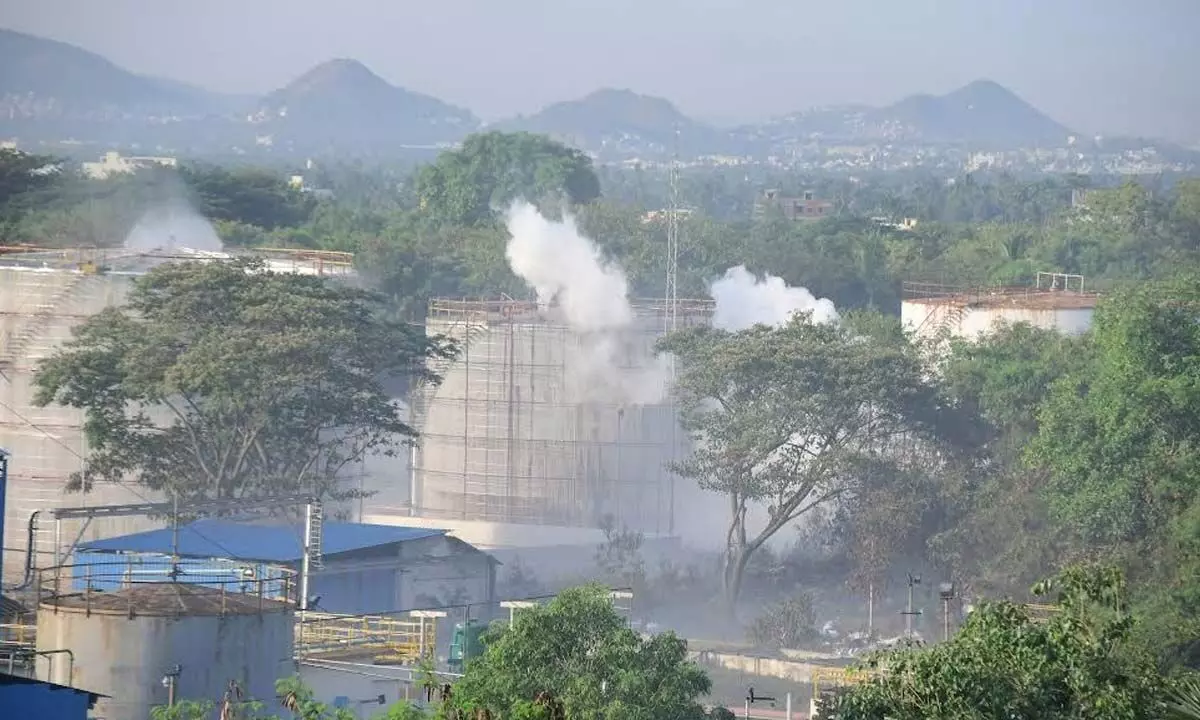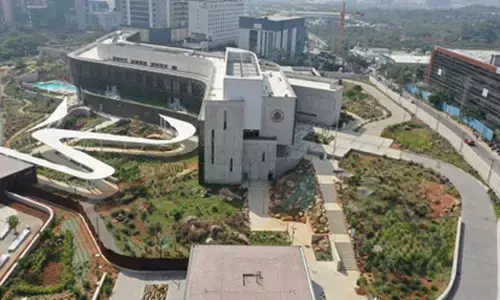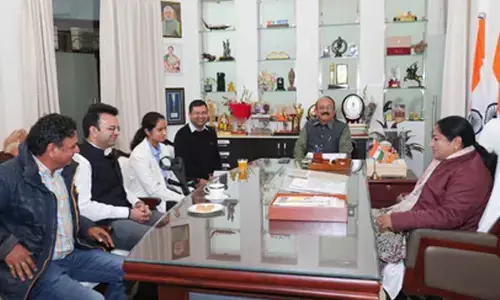Periodical inspection in industries aid in averting accidents

File photo of styrene monomer gas leak at LG Polymers in Visakhapatnam
- Strict adherence to safety protocols at every stage of operation should be followed by the companies
- Continuous monitoring system and regular maintenance result in avoiding industrial accidents from recurring
Visakhapatnam: As Andhra Pradesh is endowed with the longest coastline that stretches up to 972-km, strict compliance with the government guidelines and safety protocols plays a significant role in bringing down disasters and associated risks to human life and infrastructure.
Speaking to The Hans India on the sidelines of the national-level training of trainers on 'multi hazard risk reduction and resilience' at GVMC, Head of GMR Division and CBRN, Industrial and Cyber DRR division, National Institute of Disaster Management (NIDM) Surya Parkash says, "To deal with disaster management at a large scale, mapping, inventory, identifying the hazards that frequent the region, local topography, environmental condition, among other parameters are taken into consideration."
By living in harmony with nature and following concrete preventive measures, the cascading effect of the disaster could be avoided to a substantial extent. "For instance, protection of mangroves plays a key role in coastal management as they act as a natural guard and shock absorbers. They essay a critical part in coastal protection. Officials concerned should ensure that such areas are free of illegal encroachments.," emphasis Surya Parkash.
In a place like Visakhapatnam, where industrial accidents continue to recur, Surya Parkash says, effective disaster management is a way to assess both existing and emerging risks and contain them at the initial stage. "Because there is a higher scope for identifying the risk early and considering measures to fix it up rather than taking action when things go out of control," he opines.
Continuous monitoring system, periodic inspection of the plant installations, regular maintenance and strict compliance with the policies, regulations and guidelines go a long way in averting industrial accidents and ensuring safety. "When periodic inspection is carried out on site, the condition of the equipment of the plant could be monitored from close quarters and by being aware of the current status of the installations, there is a chance to curb the problem in the beginning itself rather than making it grow into a bigger disaster," conveys Surya Parkash.
Preparing onsite and offsite emergency plans in companies to prevent industrial accidents, including creating community awareness and capacity building, equipping officials and stakeholders result in effective disaster management. "And such mechanisms should be followed at every stage of the plant operation to avoid industrial accidents from recurring. However, depending on the nature of the company, products dealt, operation mechanism and the risk potential, safety plans keep varying," Surya Parkash explains.
Lack of adequate information amongst the stakeholders, lacunae in considering preventive and precautionary steps, absence of effective coordination and collaboration are some of the inadequacies identified by the Head of GMR Division and CBRN, Industrial and Cyber DRR division, NIDM in preventing industrial accidents and asserts that these are some of the areas that need a larger attention.

















